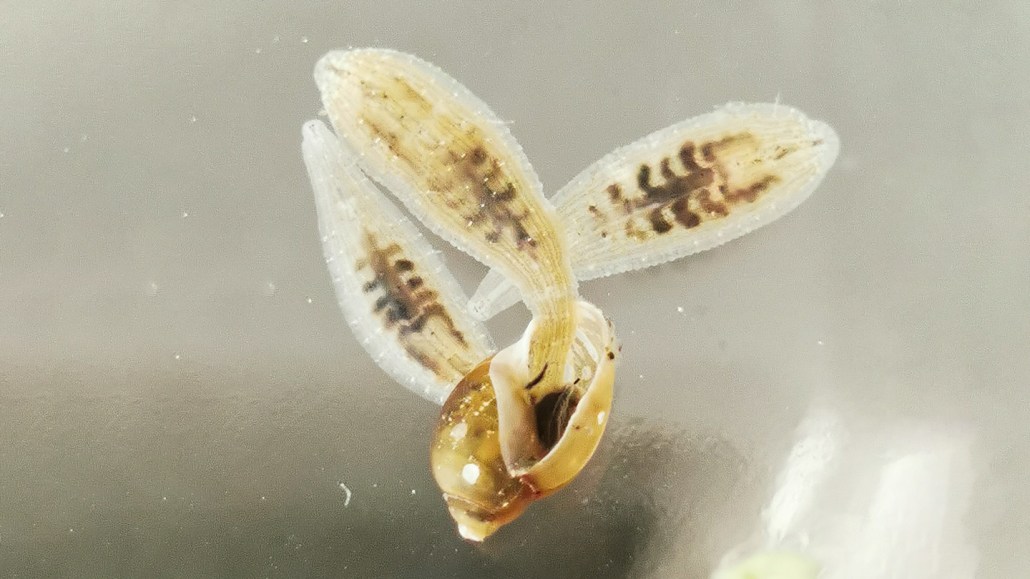
These leeches are on the hunt for a snail snack. In the lab, Helobdella austinensis proved a sucker for snails. A new study proposes them as a form a biocontrol against snail-borne diseases.
Naim Saglam
- More than 2 years ago
Leeches might seem like relics of a bygone age of medicine, but they haven’t outlived their usefulness to people yet. The freshwater leech Helobdella austinensis can eat its weight in snails every day, suggesting that leeches could be used to control freshwater snail populations — and the host of diseases they carry, researchers report April 12 in Biology Letters.
Snails spread diseases such as schistosomiasis and fascioliasis to humans and livestock. Both of those conditions are caused by flukes that spend part of their life cycle in snails. In 2021, more than 250 million people — many of them children — needed preventive treatment against the blood fluke that causes schistosomiasis. A more effective prevention would be controlling snail populations that host the parasite (SN: 7/21/16).
Leeches may be staple frights for horror movie characters, but the animals that should really live in terror of H. austinensis are snails. “Everybody who works in the very small leech world globally, we all know that these particular types of leeches love snails,” says Daniel Shain, an evolutionary biologist at Rutgers University in Camden, N.J. The leeches aren’t very picky in terms of the types of snails they eat. “And snails are a big problem globally, in terms of health, and so we just connected a few dots.”
The scientists used H. austinensis, a laboratory leech, and two other species, the lab leech H. serendipitous and H. modesta, which can be found in local lakes in New Jersey by turning over rocks. The team tested the leeches in the lab with seven different freshwater snail species, and only H. austinensis proved an indiscriminate devotee of escargot. If enough snails were present, one leech could consume 0.97 milligrams of snail per day — roughly the leech’s own weight.
Using different ratios of leeches and snails, Shain and colleagues put together predator-prey computer simulations that suggested leeches could tank populations of snails within six months.
It’s an interesting idea, says David Civitello, an ecologist at Emory University in Atlanta who was not involved in the study. But he thinks much more research is needed. Once populations of snails decreased, he notes, the leeches had a hard time finding snails. “Having a hard time finding your prey item is indicative of a poor ability to drive it extinct,” he says. “If you are indiscriminately killing snails, but you’re not eradicating snails, you’re setting up the possibility that you are weakening competition for food.” And if the leeches leave low populations of big, well-fed snails at large, their infectiousness could mean that snail-borne disease ends up getting worse, not better, he says.
More importantly, Civitello says, H. austinensis does love snails — but it will eat other things too. This is a problem that has plagued snail biocontrol, he explains. “These predators are often not specialists on the snails we want them to eat.”
The leeches do happily eat many species of snails. But in the lab, they are also fed dead insect larvae, and Civitello worries that in the wild the leeches will prove to have dangerously diverse diets.
Shain and his colleagues want to try field trials to see if the leeches stick to snail snacks. They also want to look for similar snail-eating leech species native to particular areas. H. austinensis is native to Texas, but using native species elsewhere could reduce ecosystem disruption, Shain says.
In the meantime, Shain hopes that people won’t be put off by the concept of leeches. “The idea of having, you know, 10,000 leeches inside the pond instead of 10,000 snails probably isn’t so appealing,” he admits. On the plus side, H. austinensis is tiny — and uninterested in humans. Only the snails need to shiver.






